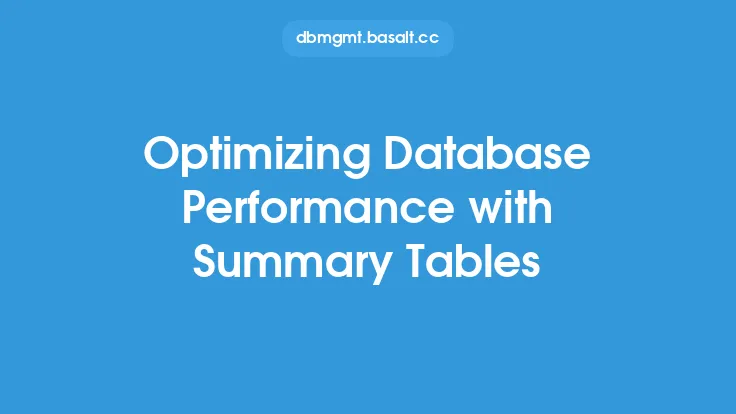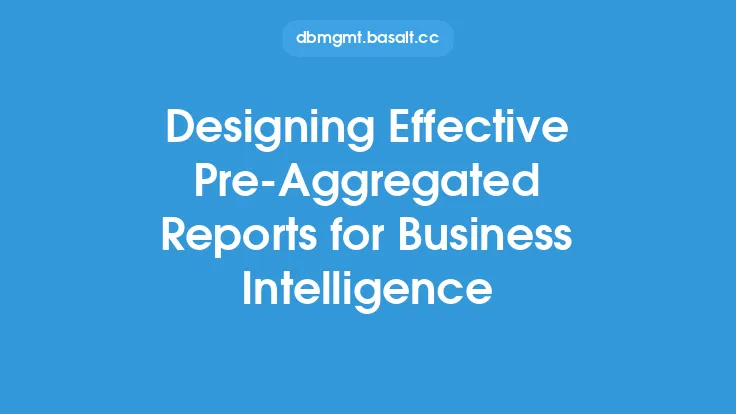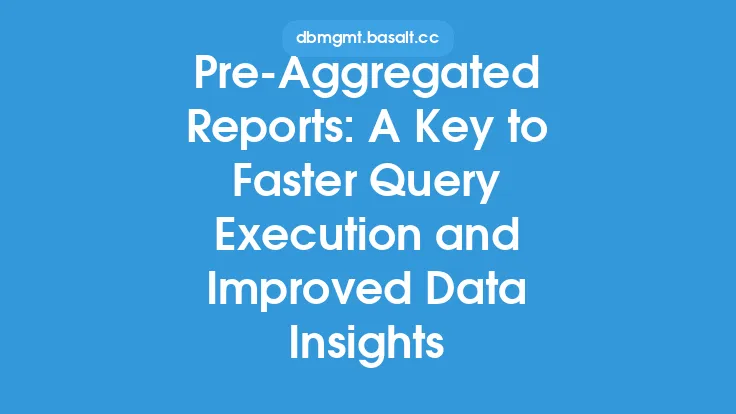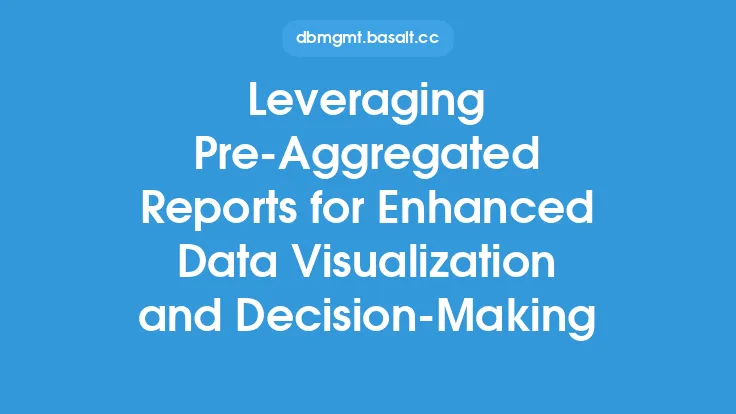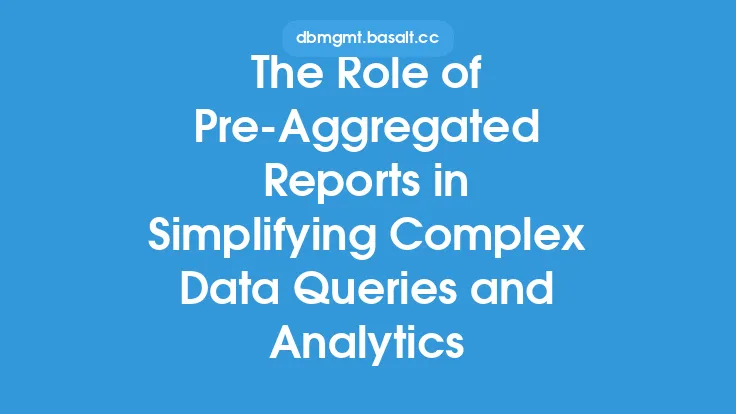Database performance is a critical aspect of any data-driven application, and optimizing it can significantly impact the overall user experience and business outcomes. One effective technique for optimizing database performance is the use of pre-aggregated reports, which involves storing aggregated data in a separate table or data structure to reduce the computational overhead of complex queries. In this article, we will delve into the details of pre-aggregated reports and explore how they can be used to optimize database performance.
Introduction to Pre-Aggregated Reports
Pre-aggregated reports are a type of data denormalization technique that involves storing aggregated data in a separate table or data structure. This approach is particularly useful for complex queries that require aggregating large amounts of data, such as sum, average, or count. By storing the aggregated data in a separate table, the database can quickly retrieve the required data without having to perform complex calculations, resulting in significant performance improvements.
How Pre-Aggregated Reports Work
Pre-aggregated reports work by creating a separate table or data structure that stores the aggregated data. This table is typically updated periodically, such as daily or weekly, to reflect changes in the underlying data. When a query is executed, the database can quickly retrieve the required data from the pre-aggregated table, rather than having to calculate it on the fly. This approach can significantly reduce the computational overhead of complex queries, resulting in faster query execution times and improved database performance.
Types of Pre-Aggregated Reports
There are several types of pre-aggregated reports, each with its own strengths and weaknesses. Some common types of pre-aggregated reports include:
- Rollup reports: These reports store aggregated data at multiple levels of granularity, such as daily, weekly, and monthly.
- Summary reports: These reports store aggregated data for a specific set of metrics, such as sales or customer counts.
- Drill-down reports: These reports store aggregated data at multiple levels of detail, allowing users to drill down into specific areas of interest.
Designing Pre-Aggregated Reports
Designing effective pre-aggregated reports requires careful consideration of several factors, including the types of queries that will be executed, the frequency of updates, and the available storage space. Some best practices for designing pre-aggregated reports include:
- Identify the most frequently executed queries: Focus on creating pre-aggregated reports for the most frequently executed queries, as these will have the greatest impact on database performance.
- Choose the right level of granularity: Select a level of granularity that balances storage space with query performance.
- Use indexing and partitioning: Use indexing and partitioning techniques to optimize query performance and reduce storage space.
Implementing Pre-Aggregated Reports
Implementing pre-aggregated reports requires careful planning and execution. Some steps to follow when implementing pre-aggregated reports include:
- Create a separate table or data structure: Create a separate table or data structure to store the pre-aggregated data.
- Update the pre-aggregated table periodically: Update the pre-aggregated table periodically to reflect changes in the underlying data.
- Modify queries to use the pre-aggregated table: Modify queries to use the pre-aggregated table instead of calculating the data on the fly.
Benefits of Pre-Aggregated Reports
Pre-aggregated reports offer several benefits, including:
- Improved query performance: Pre-aggregated reports can significantly improve query performance by reducing the computational overhead of complex queries.
- Reduced storage space: Pre-aggregated reports can reduce storage space by storing only the aggregated data, rather than the raw data.
- Simplified data analysis: Pre-aggregated reports can simplify data analysis by providing a pre-aggregated view of the data, making it easier to identify trends and patterns.
Challenges and Limitations
While pre-aggregated reports offer several benefits, there are also some challenges and limitations to consider. Some of these challenges and limitations include:
- Data consistency: Ensuring data consistency between the pre-aggregated table and the underlying data can be challenging.
- Storage space: Pre-aggregated reports can require significant storage space, particularly if the data is highly granular.
- Query flexibility: Pre-aggregated reports can limit query flexibility, as users may not be able to execute ad-hoc queries on the pre-aggregated data.
Conclusion
Pre-aggregated reports are a powerful technique for optimizing database performance, particularly for complex queries that require aggregating large amounts of data. By storing aggregated data in a separate table or data structure, pre-aggregated reports can significantly reduce the computational overhead of complex queries, resulting in faster query execution times and improved database performance. While there are some challenges and limitations to consider, the benefits of pre-aggregated reports make them a valuable tool for any data-driven application.

